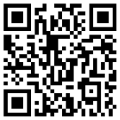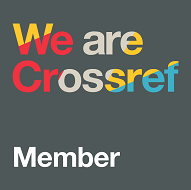Development of E-Achievements for Mapping Student Achievements in Vocational High Schools
Abstract
Full Text:
PDFReferences
A. Haleem, M. Javaid, M. A. Qadri, and R. Suman, “Understanding the role of digital technologies in education: A review,” Sustain. Oper. Comput., vol. 3, pp. 275–285, Jan. 2022, doi: 10.1016/j.susoc.2022.05.004.
A. Granić, “Educational Technology Adoption: A systematic review,” Educ. Inf. Technol., vol. 27, no. 7, pp. 9725–9744, Aug. 2022, doi: 10.1007/s10639-022-10951-7.
R. Chugh, D. Turnbull, M. A. Cowling, R. Vanderburg, and M. A. Vanderburg, “Implementing educational technology in Higher Education Institutions: A review of technologies, stakeholder perceptions, frameworks and metrics,” Educ. Inf. Technol., vol. 28, no. 12, pp. 16403–16429, 2023, doi: 10.1007/s10639-023-11846-x.
C. P. Trinter and H. E. Hughes, “Teachers as Curriculum Designers: Inviting Teachers into the Productive Struggle,” RMLE Online, vol. 44, no. 3, pp. 1–16, Mar. 2021, doi: 10.1080/19404476.2021.1878417.
L. Dietrich, D. Zimmermann, and J. Hofman, “The importance of teacher-student relationships in classrooms with ‘difficult’ students: a multi-level moderation analysis of nine Berlin secondary schools,” Eur. J. Spec. Needs Educ., vol. 36, no. 3, pp. 408–423, May 2021, doi: 10.1080/08856257.2020.1755931.
K. A. Allen, C. D. Slaten, G. Arslan, S. Roffey, H. Craig, and D. A. Vella-Brodrick, “School belonging: The importance of student and teacher relationships,” in The Palgrave Handbook of Positive Education, Springer International Publishing, 2021, pp. 525–550. doi: 10.1007/978-3-030-64537-3_21.
K. Pak, M. S. Polikoff, L. M. Desimone, and E. Saldívar García, “The Adaptive Challenges of Curriculum Implementation: Insights for Educational Leaders Driving Standards-Based Reform,” AERA Open, vol. 6, no. 2, Jun. 2020, doi: 10.1177/2332858420932828.
X. Jin, “The role of effort in understanding academic achievements: empirical evidence from China,” Eur. J. Psychol. Educ., vol. 39, no. 1, pp. 389–409, Mar. 2024, doi: 10.1007/s10212-023-00694-5.
U. N. Sio, K. Kotovsky, and J. Cagan, “Determinants of creative thinking: the effect of task characteristics in solving remote associate test problems,” Think. Reason., vol. 28, no. 2, pp. 163–192, 2022, doi: 10.1080/13546783.2021.1959400.
P. Isaias and T. Issa, “Introduction to Information Systems Models and Methodologies,” in High-Level Models and Methodologies for Information Systems, Springer, New York, NY, 2015, pp. 1–19. doi: 10.1007/978-1-4614-9254-2_1.
N. S. Madonsela, “Integration of the Management Information System for Competitive Positioning,” in Procedia Manufacturing, Elsevier, Jan. 2020, pp. 375–382. doi: 10.1016/j.promfg.2020.02.176.
T. Knauer, N. Nikiforow, and S. Wagener, “Determinants of information system quality and data quality in management accounting,” J. Manag. Control, vol. 31, no. 1–2, pp. 97–121, Apr. 2020, doi: 10.1007/s00187-020-00296-y.
Ö. Altındağ and V. Öngel, “Information Management, Organizational Intelligence, and Innovation Performance Triangle: Empirical Research on Turkish It Firms,” SAGE Open, vol. 11, no. 4, Oct. 2021, doi: 10.1177/21582440211052550.
C. M. Reigeluth, “Formative Design in the Holistic 4D Model,” Springer, Cham, 2023, pp. 13–23. doi: 10.1007/978-3-031-41950-8_2.
A. Nugroho, P. I. Santosa, and R. Hartanto, “Usability Evaluation Methods of Mobile Applications: A Systematic Literature Review,” in Proceeding - 2022 International Symposium on Information Technology and Digital Innovation: Technology Innovation During Pandemic, ISITDI 2022, Institute of Electrical and Electronics Engineers Inc., 2022, pp. 92–95. doi: 10.1109/ISITDI55734.2022.9944401.
R. Harrison, D. Flood, and D. Duce, “Usability of mobile applications: literature review and rationale for a new usability model,” J. Interact. Sci., vol. 1, no. 1, p. 1, May 2013, doi: 10.1186/2194-0827-1-1.
K. Sagar and A. Saha, “A systematic review of software usability studies,” Int. J. Inf. Technol., pp. 1–24, Dec. 2017, doi: 10.1007/s41870-017-0048-1.
S. Borsci, S. Federici, A. Malizia, and M. L. De Filippis, “Shaking the usability tree: why usability is not a dead end, and a constructive way forward,” Behav. Inf. Technol., vol. 38, no. 5, pp. 519–532, May 2019, doi: 10.1080/0144929X.2018.1541255.
DOI: http://dx.doi.org/10.17977/um010v7i12024p07-11
Refbacks
- There are currently no refbacks.
 | Letters in Information Technology Education (LITE) |

1.png)
1.png)
4.png)
1.png)
.png)
.png)

3.png)
1.png)
1.png)

3.jpg)